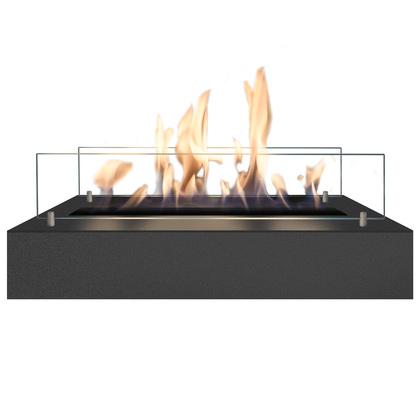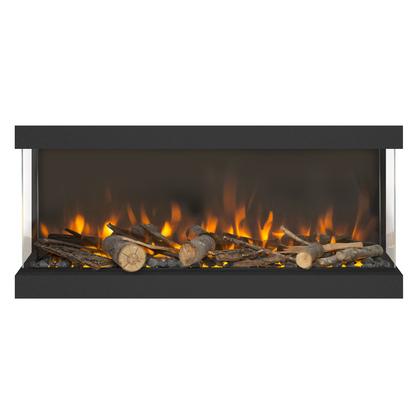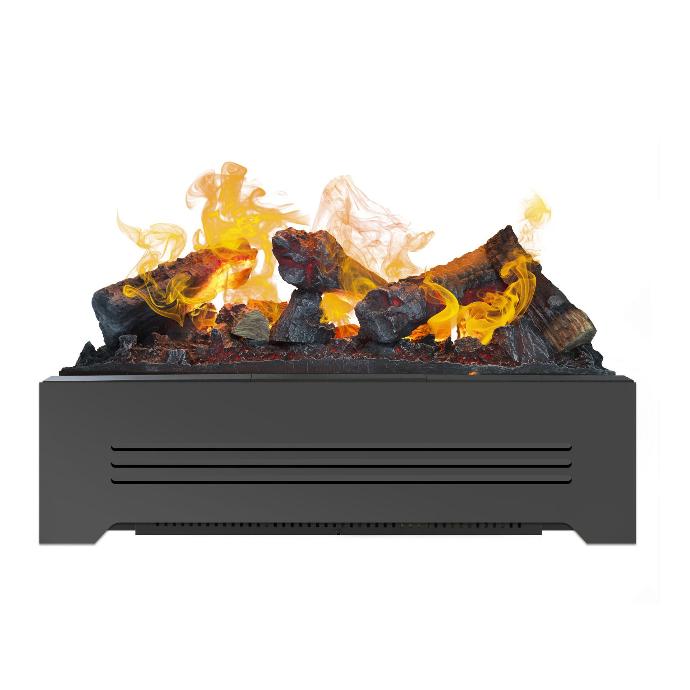What are your options for replacing a gas or wood fireplace?
Thinking about replacing your current gas or wood fireplace but not sure what to choose? Start by identifying your priorities and living situation. Are you looking for ambiance, additional heat, or full room heating? Do you prefer real flames or maximum convenience and safety? And what budget do you have in mind?
In this article, we compare all available options and list their pros and cons.
Wood Fireplace: powerful but polluting
A wood-burning fireplace provides plenty of heat and creates a cozy, authentic atmosphere. But there are important drawbacks:
- Requires a flue and certified chimney
- Emits smoke, odor, and possible nuisance in urban areas
- Needs large storage space for wood
- Produces a lot of fine dust, even in modern models
Pro: High heat output
Con: Environmentally harmful, inconvenient to use
Pellet Stove: efficient but technical
Pellet stoves burn compressed wood pellets and are often programmable. They can heat multiple rooms via air ducts or central heating systems.
- More efficient and cleaner than wood fireplaces
- Often includes fan and thermostat
- Still needs flue gas ventilation
- Requires electricity to operate
Pro: Automated function and high efficiency
Con: More complex, needs maintenance
Gas Fireplace: user-friendly but less future-proof
Gas fireplaces are easy to use, safe, and convenient. One push of a button gives instant heat. However:
- Requires a gas connection (not available in all new homes)
- Requires a gas connection (not available in all new homes) Needs a flue or concentric system
- Low flame settings can lack ambiance; high flames may be too hot
- The Netherlands is phasing out natural gas
Pro: Easy operation
Less sustainable, limited aesthetic control
Alternatives Without a Flue
More and more people are choosing a fireplace that doesn't require a chimney. In cities especially, environmental regulations make wood and gas less attractive.
More and more people are choosing a fireplace that doesn't require a chimney. In cities especially, environmental regulations make wood and gas less attractive. Studies show: indoor wood burning is the largest source of fine dust pollution — worse than old diesel cars.
Luckily, there are modern, clean alternatives:
Electric Fireplace: atmosphere and simplicity
An electric fireplace is ideal if you want ambiance without the hassle. High-end models are nearly indistinguishable from gas fireplaces.
- No smoke, no odor, no flue required
- Simply plug it in
- Often includes heating (up to ±22 m²)
- Perfect for apartments and renovations
Pro: Low maintenance, energy-efficient, safe
Con: No real flames
Bioethanol Fireplace: real flames without smoke
Prefer real fire but not the downsides of gas or wood? A bioethanol fireplace is a great option.
- Burns clean, renewable fuel
- No flue or gas line required
- Available in tabletop, wall-mounted, or built-in models
- Provides radiant heat and real ambiance
Pro: Flexible placement, real fire
Con: Less suitable as primary heat source
Conclusion: what fits your home?
| Fireplace Type | Ambiance | Heat | Eco-Friendly | Installation |
|---|---|---|---|---|
| Wood fireplace | Major construction | |||
| Pellet stove | Technically complex | |||
| Gas fireplace | Limited options | |||
| Electric fireplace | Very simple | |||
| Bioethanol fireplace | Easy setup |
Our advice:
- Want warmth and ease? Choose electric
- Want real flames and flexibility? Choose bioethanol
- Need primary heating with fire? Choose gas or wood — but be mindful of regulations, costs, and emissions
What will you choose?
Whether you value sustainability, ambiance, or convenience, there's always a fireplace that fits your lifestyle. And best of all? A flue-free fireplace saves you time, space, and money.



